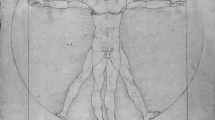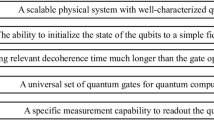Abstract
Mendeleev’s failure to represent the periodic system as a continuum may have hidden from him the space for the noble gases. A spiral format might have revealed the significance of the wide gaps in atomic mass between his rows. Tables overemphasize the division of the sequence into ‘periods’ and blocks. Not only do spirals express the continuity; in addition they are more attractive visually. They also facilitate a new placing for hydrogen and the introduction of an ‘element of atomic number zero’.




Similar content being viewed by others
Notes
This, like all references to Mendeleev’s works, is taken from the collection edited by Jensen 2002. It is amusing to note, given Mendeleev’s aversion to spiritualism, that the most popular website for the text of the 1904 article is one devoted to the occult, http://www.rexresearch.com. The x for ether has been deleted from the table reproduced there—too material?!
The 1971 German article translated by Jensen reproduces the table given in the Russian original of November 1870, illustrated by Gordin (2004, p. 35).
Argon dos not strictly fall into the gap as its atomic weight is greater than that of potassium. Mendeleev got round this by assuming a mass of 38.
Mendeleev more often wrote ryad, ‘row’, German ‘Reihe,’ or seria. ‘series’.
Janet ‘corrected’ the ‘wrong’ orbitals to make them fit (Janet 1930, p. 21).
It is also possible to envisage negative atomic numbers for the elements of anti-matter.
Von Antropoff’s table is widely known as that of Linus Pauling, who used it—minus element zero—in his 1949 book, General Chemistry.
Van Spronsen (1969, pp. 160, 167, 172, 183). In re-drawing Janet’s spiral, he placed the central zero above hydrogen instead of helium.
References
Atkins, P.W., Kaesz, H.: A central position for hydrogen in the periodic table. Chem. Int. 25, 14 (2003)
Clark, J.D.: A modern periodic chart of the chemical elements. Science 111, 661–663 (1950)
Crawford, E.: The Beginnings of the Nobel Institution: The Science Prizes 1901–1915. Cambridge University Press, Cambridge (1984)
Cronyn, M.W.: The proper place of hydrogen in the periodic table. J. Chem. Educ. 80, 947–951 (2003)
Crookes, W.: Presidential address to the Royal Society, chemical section. Chem. News 45, 115–126 (1886)
Emerson, E.I.: A new spiral form of the periodic table. J. Chem. Educ. 22, 111–115 (1944)
Emsley, J.: Mendeleev’s dream table. New Sci. 105, 32–36 (1985)
Friedman, R.M.: The Politics of Excellence: Behind the Nobel Prize in Science. W. H. Freeman, New York (2001)
Gordin M.: A Well-ordered Thing: Dmitri Mendeleev and the Shadow of the Periodic Table. Basic Books, New York (2004)
Habashi, F.: A new look at the periodic table. Interdiscip. Sci. Rev. 22, 53–60 (1997)
Janet, C.: La structure du noyau de l’atome, considérée dans la classification périodique des Eléments Chimiques. Imprimerie Départementale de l’Oise, Beauvais (1927)
Janet, C.: La classification hélicoïdale des éléments chimiques. Imprimerie Départementale de l’Oise, Beauvais (1928)
Janet, C.: The helicoidal classification of the elements. Chem. News 138, 372–374, 388–393 (1929)
Janet, C.: Concordance de l’arrangement quantique de base des électrons planétaires des atomes avec la classification scalariforme, hélicoïdale des elements chimiques. Imprimerie Départementale de l’Oise, Beauvais (1930)
Jensen, W.B.: The positions of lanthanum (actinium) and lutetium (lawrecium) in the periodic table. J. Chem. Educ. 59, 634–6 (1982)
Jensen, W.B.: The place of zinc, cadmium and mercury in the periodic table. J. Chem. Educ. 80, 952–960 (2003)
Jensen, W.B. (ed.): Mendeleev on the Periodic Law: Selected Writings, 1869–1905. University of Cincinnati, Cincinnati (2002).
Katz, G.: The periodic table: an eight-period table for the 21st Century. Chem. Educ. 6, 324–332 (2001)
Kemp, M.: Mendeleev’s matrix. Nature 393, 527 (1998)
Laing, M.: A revised periodic table: with the lanthanides repositioned. Found. Chem. 7, 203–233 (2005)
Mazurs, E.G.: Graphic Representations of the Periodic System during One Hundred Years. University of Alabama Press, Alabama (1974)
Rouvray, H., King, R.B.: The Periodic Table: Into the 21st Century. Research Studies Press, Baldock (2004)
Sacks, O.: Uncle Tungsten. Picador, London (2001)
Scerri, E.R.: The Periodic Table: Its Story and its Significance. Oxford University Press, Oxford (2007)
Sedgewick, W.: Force as an Entity with Stream Pool and Wave Forms: An Engineer’s Practical Way of Explaining the Facts Ascertained by Science. Sampson Low etc, London (1890)
Stewart, P.J.: A new image of the periodic table. Educ. Chem. 41, 156–158 (2004)
Timmes, F.X., Woosley, S.E., Weaver, T.A.: The black hole and neutron star initial mass function. Astrophys. J. 457, 834–865 (1996)
von Antropoff, A.: Eine neue Form des periodischen Systems der Elementen. Z. Angew. Chem. 39, 722–725 (1926)
van Spronsen, J.W.: The Periodic System of Chemical Elements. Elsevier, Amsterdam (1969)
Author information
Authors and Affiliations
Corresponding author
Rights and permissions
About this article
Cite this article
Stewart, P.J. A century on from Dmitrii Mendeleev: tables and spirals, noble gases and Nobel prizes. Found Chem 9, 235–245 (2007). https://doi.org/10.1007/s10698-007-9038-x
Received:
Accepted:
Published:
Issue Date:
DOI: https://doi.org/10.1007/s10698-007-9038-x




